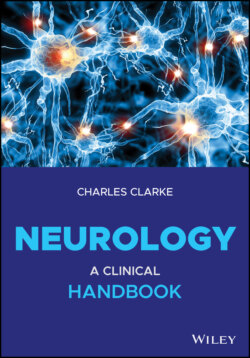Читать книгу Neurology - Charles H. Clarke - Страница 37
Afferent and Efferent Cerebellar Pathways
ОглавлениеAfferent pathways include:
Spino‐cerebellar: posterior and anterior spino‐cerebellar tracts – proprioceptive data from spinal cord.
Ponto‐cerebellar: originates in the cerebral cortex, and enters via middle cerebellar peduncle.
Vestibulo‐cerebellar: vestibular nuclei, enters via inferior peduncle.
Efferent pathways project to the vestibular system, to the cord, thalamus, motor cortex and to the red nucleus,.
The cerebellum and red nucleus in the midbrain tegmentum have a role in learned movement. The system modulates new motor activity:
The red nucleus is a relay between cerebral cortex and the olive – the red nucleus is inhibitory, to the ipsilateral olive.
When there is imbalance between movement intended (cerebral cortex) and movement already learned (cerebellum), the red nucleus is thought to modulate, to achieve harmony.
A lesion of the red nucleus – a coarse tremor – is a breakdown of this harmonic, over‐correcting each part of a movement.
In contrast to the anatomical complexity, signs of cerebellar disease are usually straightforward:
A lateral lobe lesion – a tumour or an infarct – causes rebound and past pointing of the upper limb and similar lower limb signs.
A vermis lesion – for example midline medulloblastoma – affects vestibular connection: truncal ataxia can be an early sign.
Nystagmus – coarse, fast phase towards the side of a lesion, sometimes dramatic – is an inconstant feature.
